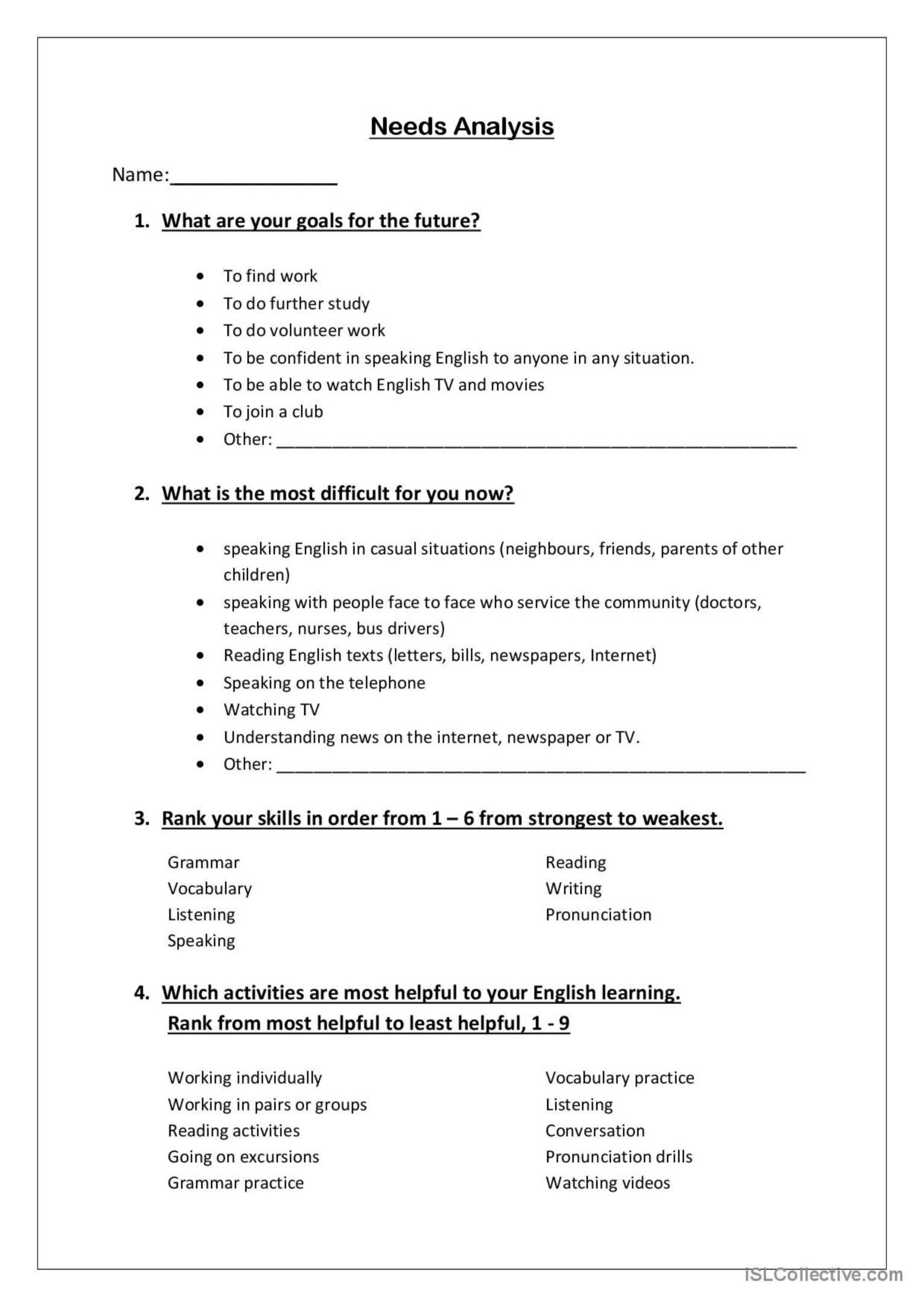Methods of Conducting Needs Analysis in English Language Teaching (Algerian Context)
Introduction
Needs analysis is a crucial step in designing effective English language courses, especially in Algeria, where diverse academic and professional contexts shape learners’ needs. Inspired by Algerian ESP practitioners' work on ESP (English for Specific Purposes) in Algeria, this lesson explores different methods of conducting needs analysis and how they can be applied to create tailored learning experiences.
Objectives
By the end of this lesson's section, you will be able to:
-
Understand the importance of needs analysis in ELT.
-
Identify and apply different methods of conducting needs analysis.
-
Design a simple needs analysis tool for an Algerian ESP context.
3. Lesson Content
3.1 What is Needs Analysis? Needs analysis is the process of gathering information about learners to understand their motivations, expectations, current proficiency, and learning preferences. In TEFL, it helps design courses that address learners' real-world needs.
3.2 Why is Needs Analysis Important in Algeria? According to several Algerian ELT and ESP practitioners, understanding the socio-economic and educational context of Algerian learners is key to developing relevant ESP courses. For instance, engineering students may require technical English for reading manuals, while business students might need communication skills for negotiations.
Methods of Conducting Needs Analysis:
-
Questionnaires:
-
Interviews:
-
Classroom Observation:
-
Diagnostic Tests:
-
Focus Groups:
3.4 Applying Needs Analysis in Algerian Context: In Algeria, factors such as class size, access to resources, and students' exposure to English outside the classroom influence the choice of methods. A combination of questionnaires and interviews is often practical, providing both breadth and depth in understanding learners’ needs.
Exercise
Task: Design a short needs analysis questionnaire (5-7 questions) for a group of students learning English for Academic Purposes. Include questions that cover:
-
Learners’ motivations for learning English.
-
Current skill levels.
-
Preferred learning styles.
-
Specific language skills they want to improve.
Submit your questionnaire to your teacher via email with a brief explanation of why you selected those questions.
To sum up
Needs analysis is the foundation of effective course design. Understanding learners’ needs helps teachers create courses that are relevant, engaging, and impactful. In the Algerian context, applying these methods ensures that language instruction aligns with students' academic and professional aspirations.

